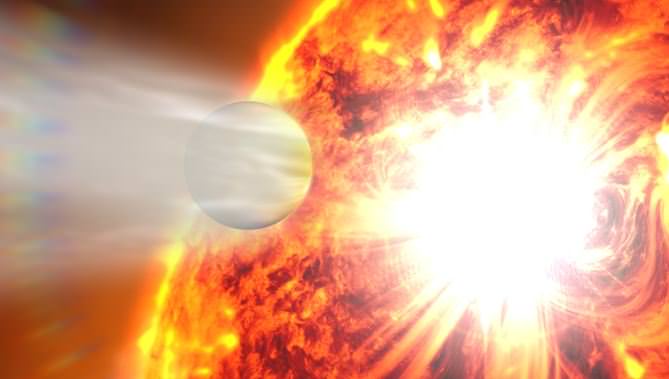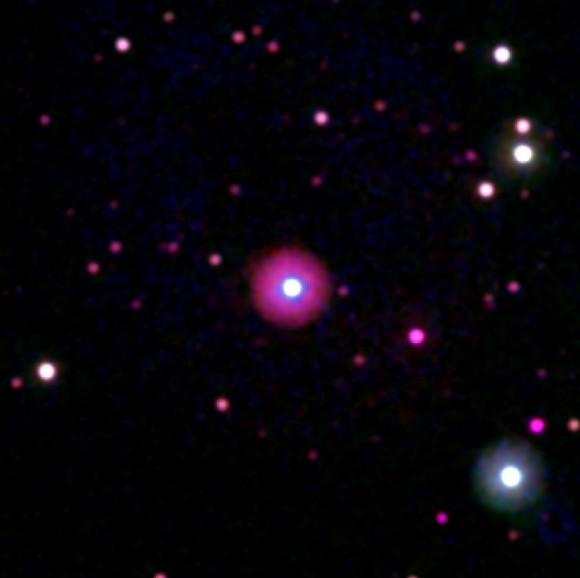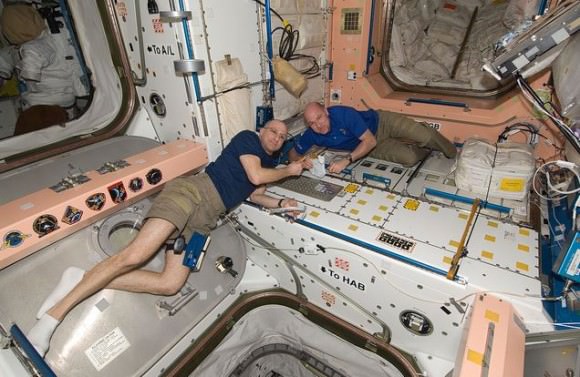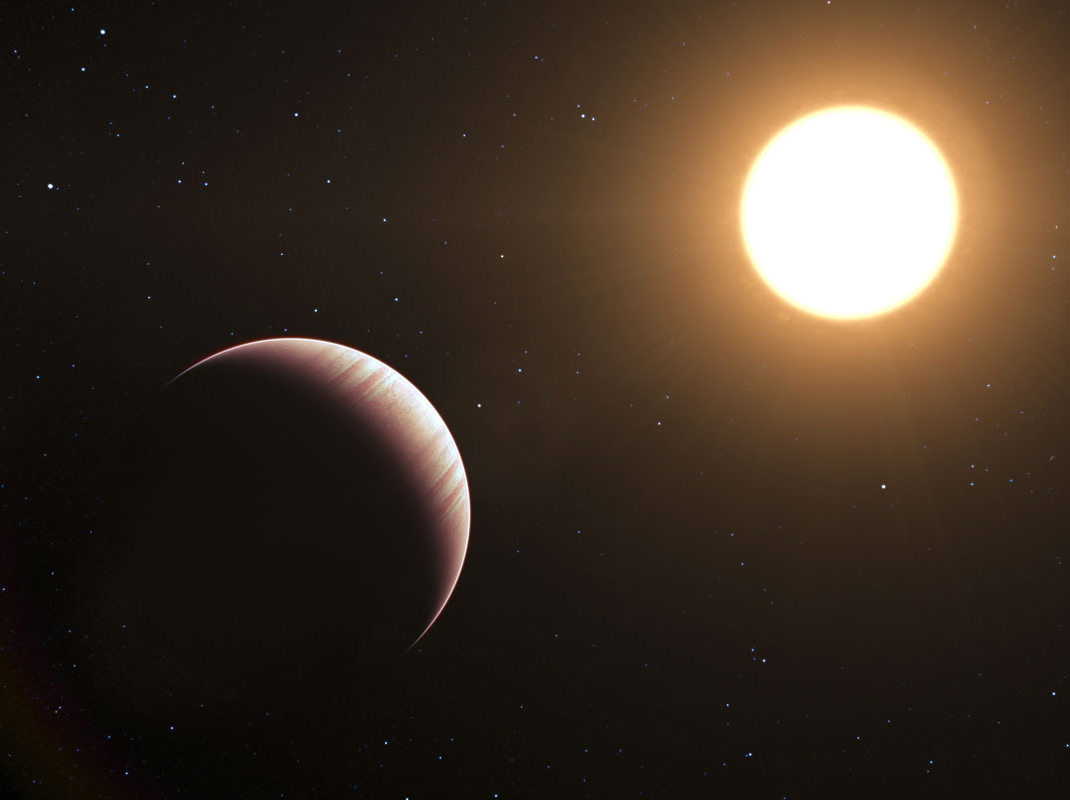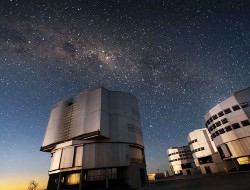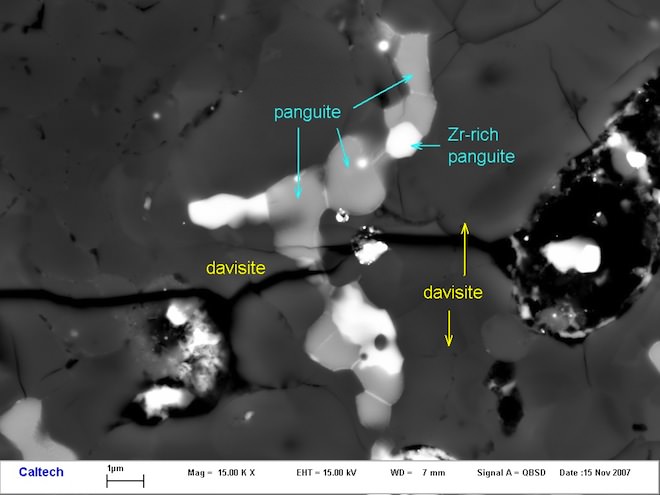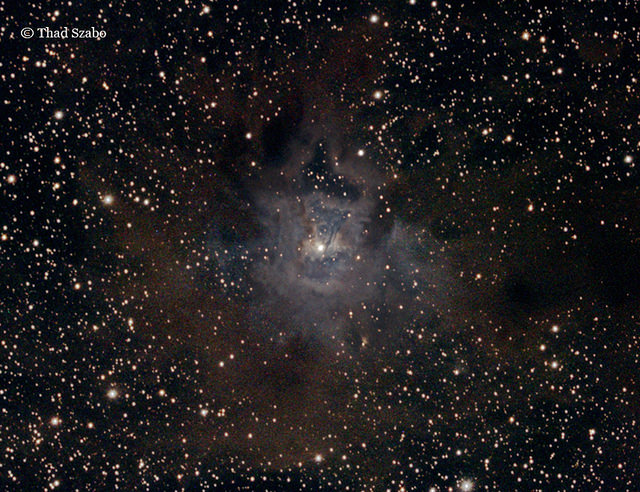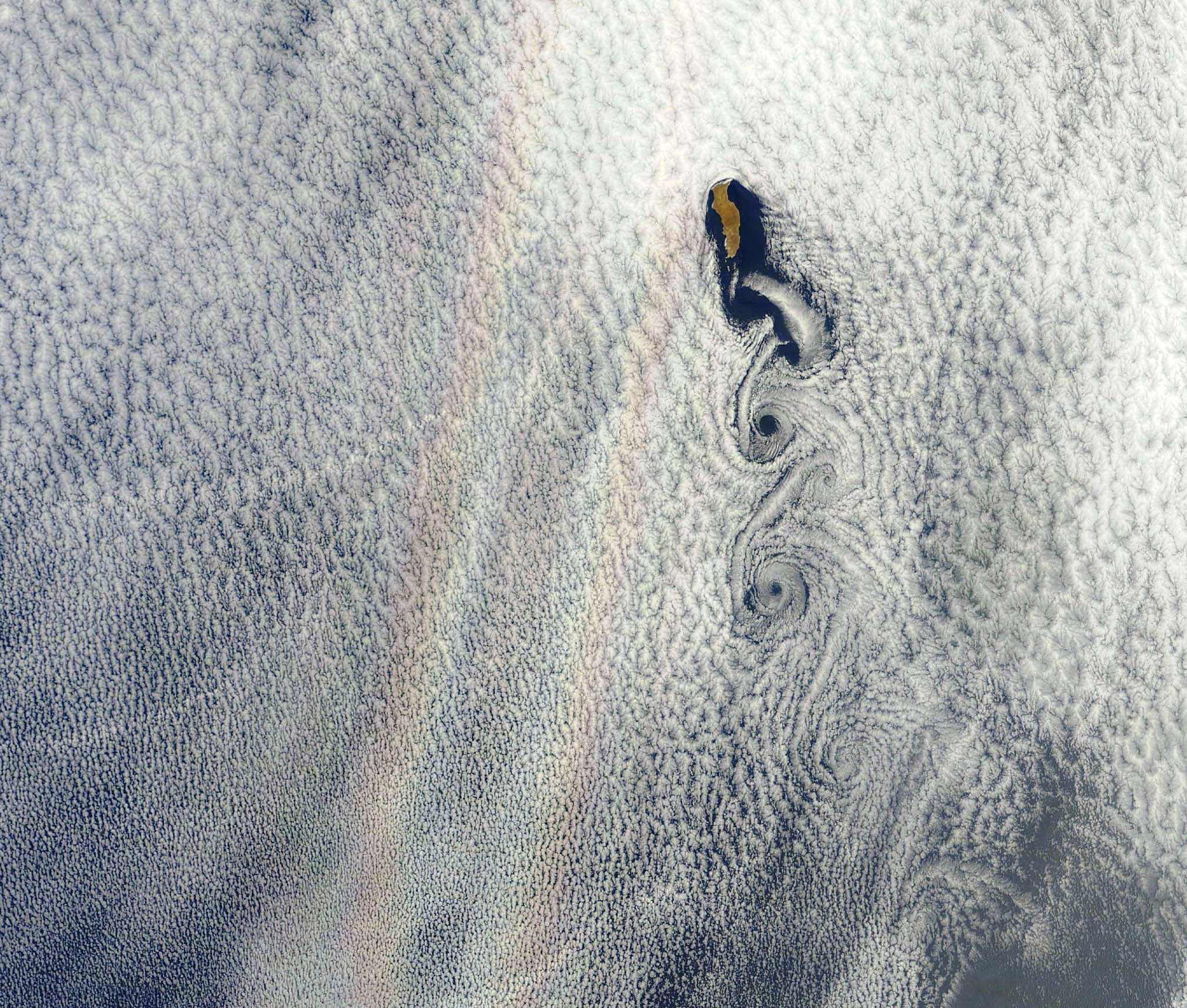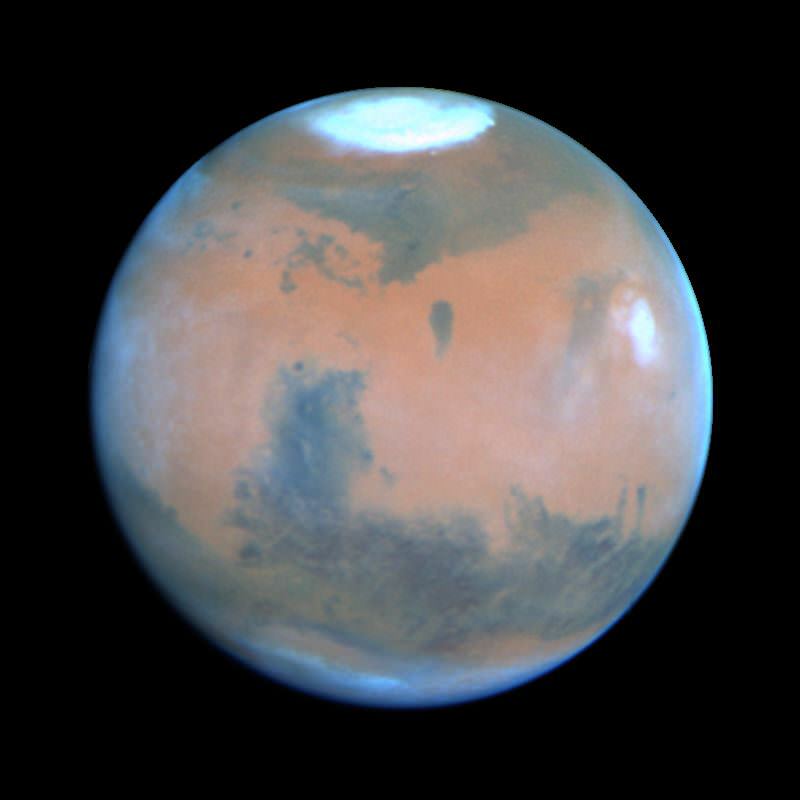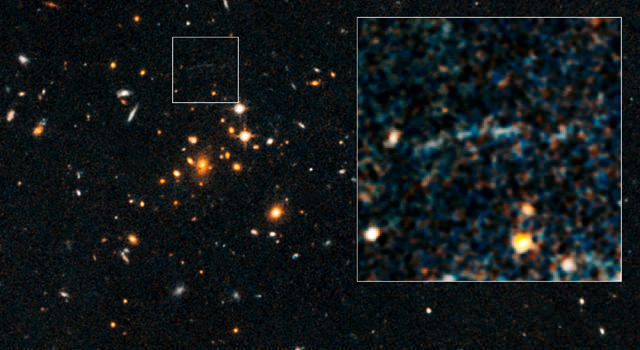Since its discovery in 2005, exoplanet HD 189733b has been one of the most-observed extra solar planets, due to its size, compact orbit, proximity to Earth and enticing blue-sky atmosphere. But astronomers using the Hubble Space Telescope and the Swift Telescope have witnessed dramatic changes in the planet’s upper atmosphere following a violent flare from its parent which bathed the planet in intense X-ray radiation. The scientists say being able to watch the action gives a tantalizing glimpse of the changing climates and weather on planets outside our Solar System.
While HD 189733b has a blue sky like Earth, it is one of the many “hot Jupiters” that have been the easiest for exoplanet hunters to find: huge gas planets that orbit extremely close to its star. HD 189733 lies extremely close to its star, called HD 189733A, just one thirtieth the distance Earth is from the Sun, whipping around the star in 2.2 days. Additionally, the system is just 63 light-years away, so close that its star can be seen with binoculars near the famous Dumbbell Nebula.
Even though its star is slightly smaller and cooler than the Sun, this makes the planet’s climate exceptionally hot, at above 1000 degrees Celsius, and the upper atmosphere is battered by energetic extreme-ultraviolet and X-ray radiation.
Even though HD 189733b’s atmosphere wasn’t thought to be evaporating (like a similar exoplanet called Osiris, or HD 209458b) astronomers knew the potential was there. The atmospheric gases extend far beyond the planetary “surface” allowing stellar light to pass through, and in previous observations astronomers were able to get a peek into what chemical compounds surround HD 189733b. From this analysis, scientists deduced that water and methane is contained in the atmosphere; and later, the Spitzer space telescope even mapped the temperature distribution around the globe. Additional research indicated a thin layer of particles exists in the upper atmosphere of HD 189733b, creating thin reflective clouds.
Astronomer Alain Lecavelier des Etangs from at the Paris Institute of Astrophysics in France led a team using Hubble to observe the atmosphere of this planet during two periods in early 2010 and late 2011, as it was silhouetted against its parent star. While backlit in this way, the planet’s atmosphere imprints its chemical signature on the starlight, allowing astronomers to decode what is happening on scales that are too tiny to image directly. They were hoping to observe the atmosphere evaporating away, but were disappointed in 2010.
“The first set of observations were actually disappointing,” Lecavelier said, “since they showed no trace of the planet’s atmosphere at all. We only realized we had chanced upon something more interesting when the second set of observations came in.”
The team’s follow-up observations, made in 2011, showed a dramatic change, with clear signs of a plume of gas being blown from the planet at a rate of at least 1000 tons per second, at speeds of 300,000 mph, giving the planet a comet-like appearance.
“We hadn’t just confirmed that some planets’ atmospheres evaporate,” Lecavelier said, “we had watched the physical conditions in the evaporating atmosphere vary over time. Nobody had done that before.”
So why was the atmosphere’s condition changing?
Despite the extreme temperature of the planet, the atmosphere is not hot enough to evaporate at the rate seen in 2011. Instead the evaporation is thought to be driven by the intense X-ray and extreme-ultraviolet radiation from the parent star, which is about 20 times more powerful than that of our own Sun. Taking into account also that HD 189733b is a giant planet very close to its star, then it must suffer an X-ray dose 3 million times higher than the Earth.
Because X-rays and extreme ultraviolet starlight heat the planet’s atmosphere and likely drive its escape, the team also monitored the star with Swift’s X-ray Telescope (XRT). On Sept. 7, 2011, just eight hours before Hubble was scheduled to observe the transit, Swift was monitoring the star when it unleashed a powerful flare. It brightened by 3.6 times in X-rays, a spike occurring atop emission levels that already were greater than the sun’s.
“The planet’s close proximity to the star means it was struck by a blast of X-rays tens of thousands of times stronger than the Earth suffers even during an X-class solar flare, the strongest category,” said co-author Peter Wheatley, a physicist at the University of Warwick in England.
After accounting for the planet’s enormous size, the team notes that HD 189733b encountered about 3 million times as many X-rays as Earth receives from a solar flare at the threshold of the X class.
“X-ray emissions are a small part of the star’s total output, but it is the part that it is energetic enough to drive the evaporation of the atmosphere,” said co-author Peter Wheatley from the University of Warwick, in the UK. “This was the brightest X-ray flare from HD 189733A of several observed to date, and it seems very likely that the impact of this flare on the planet drove the evaporation seen a few hours later with Hubble.”
The team also said the changes in the star’s output may mean it undergoes a seasonal process similar to the Sun’s 11-year sunspot cycle.
The team hopes to clarify the changes they witnessed using future observations with Hubble and ESA’s XMM-Newton X-ray space telescope, but say there is no question that the planet was hit by a stellar flare, and no question that the rate of evaporation of the planet’s atmosphere shot up.
This research shows the benefits of collaborative research between missions, as Swift saw the flare, and Hubble saw the massive amount of gas stripped out of the planet’s atmosphere. It also gives potential for future research, to watch for changes in both the star and atmospheres of other worlds.
This video from NASA’s Goddard Spaceflight Center provides additional information:
Lead image caption: This artist’s rendering illustrates the evaporation of HD 189733b’s atmosphere in response to a powerful eruption from its host star. NASA’s Hubble Space Telescope detected the escaping gases and NASA’s Swift satellite caught the stellar flare. Credit: NASA’s Goddard Space Flight Center.
Second image caption: Swift’s Ultraviolet/Optical Telescope captured this view of HD 189733b’s star on Sept. 14, 2011. The image is 6 arcminutes across. Credit: NASA/Swift/Stefan Immler

